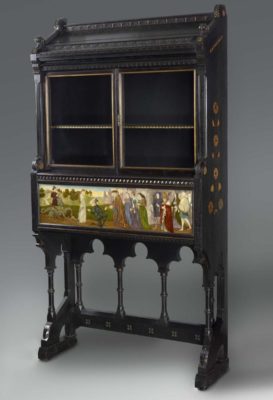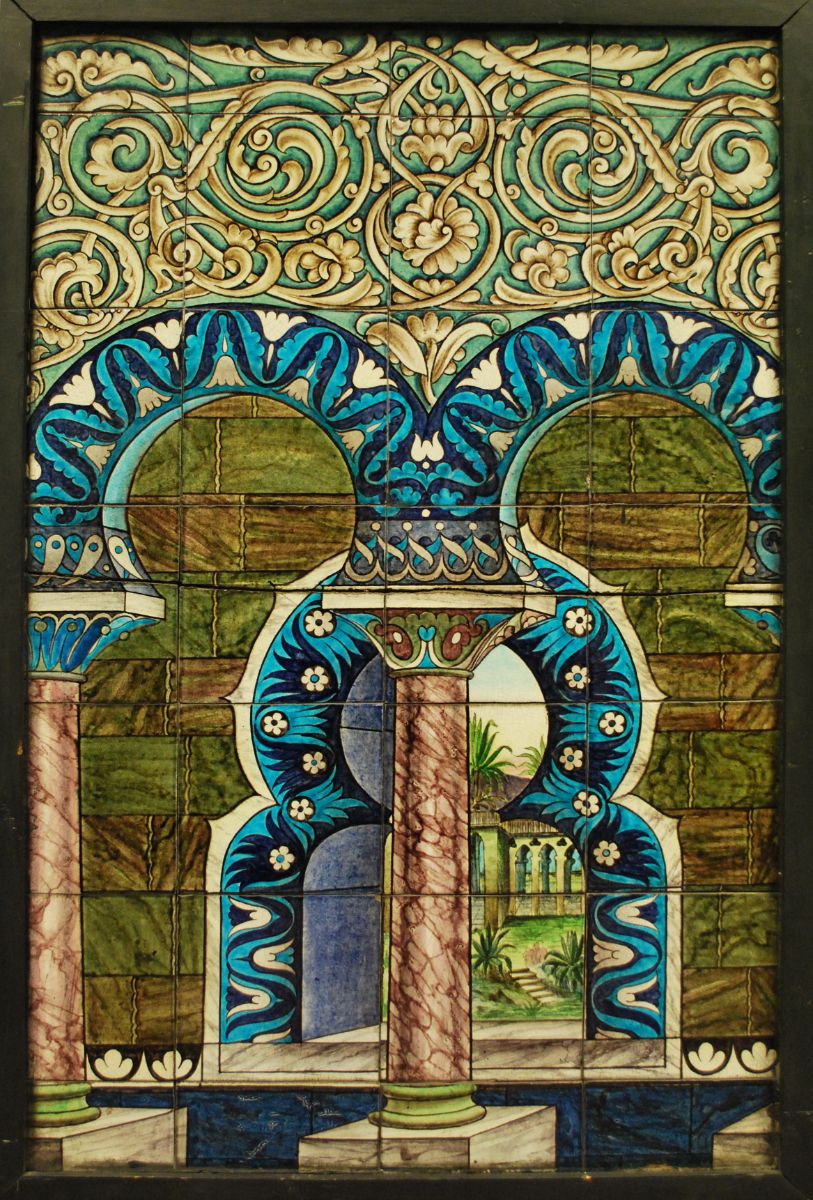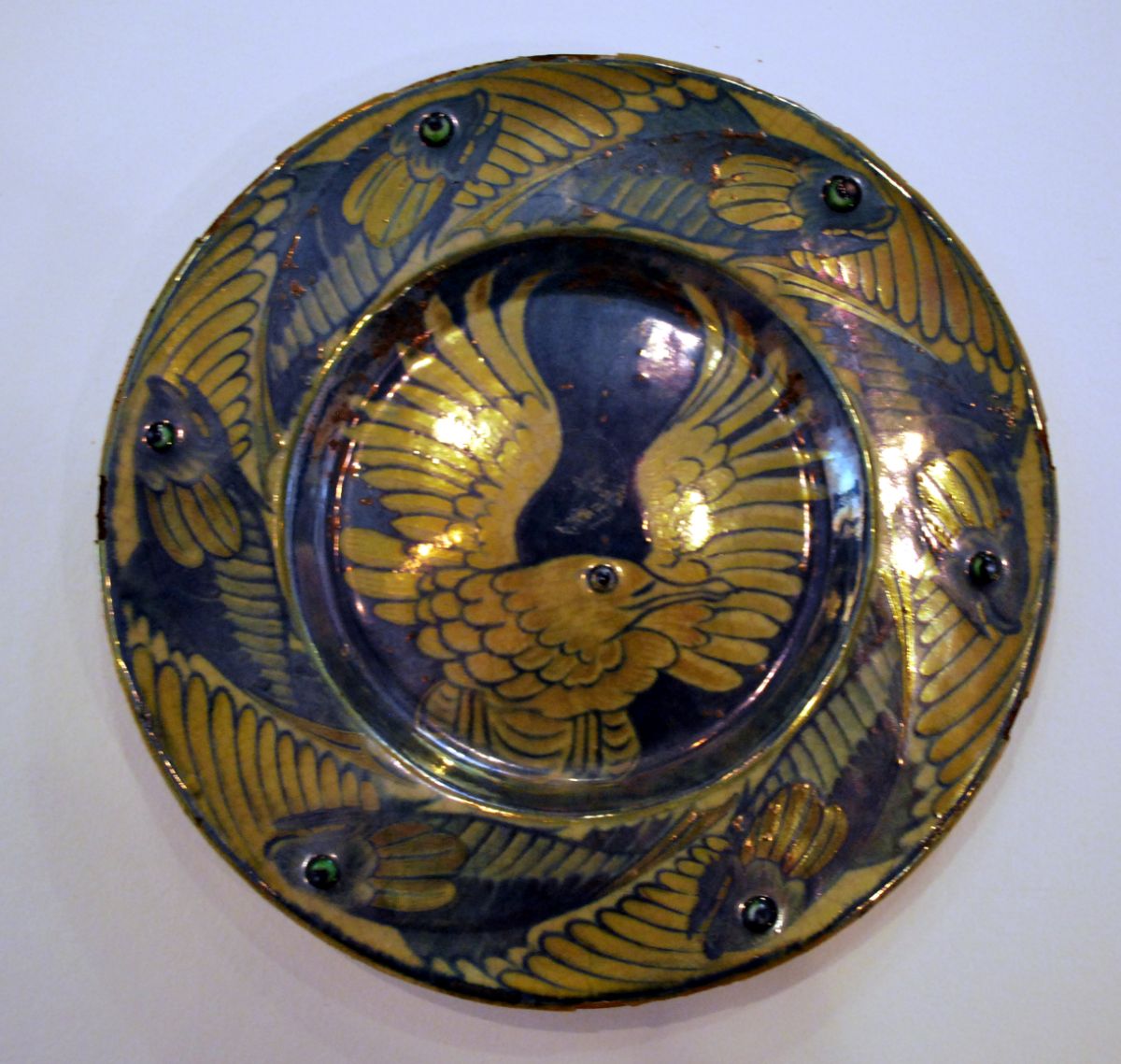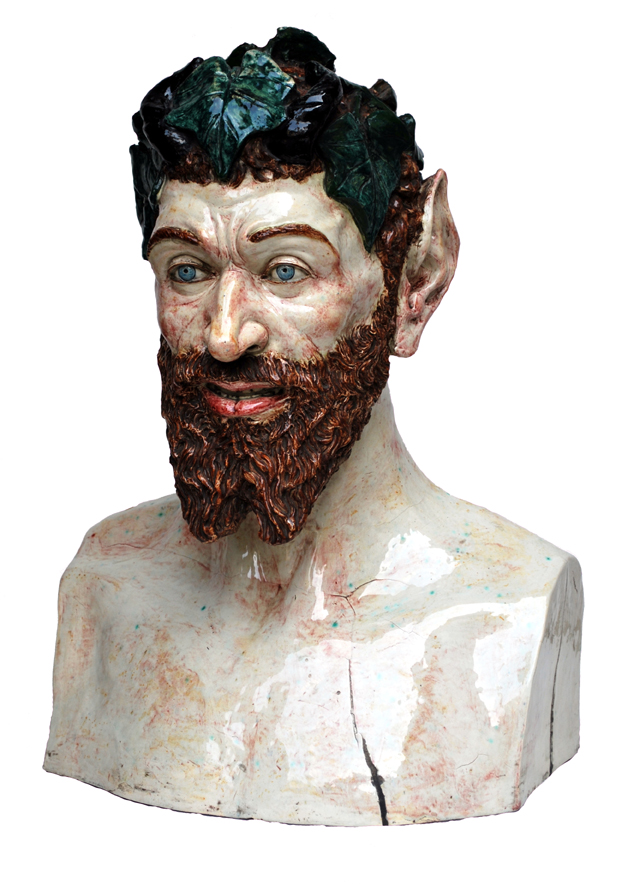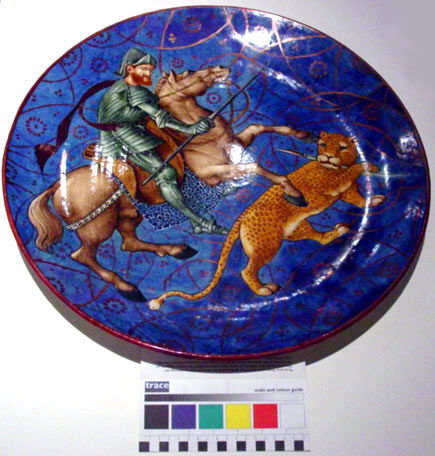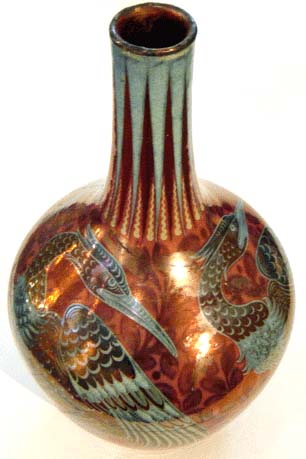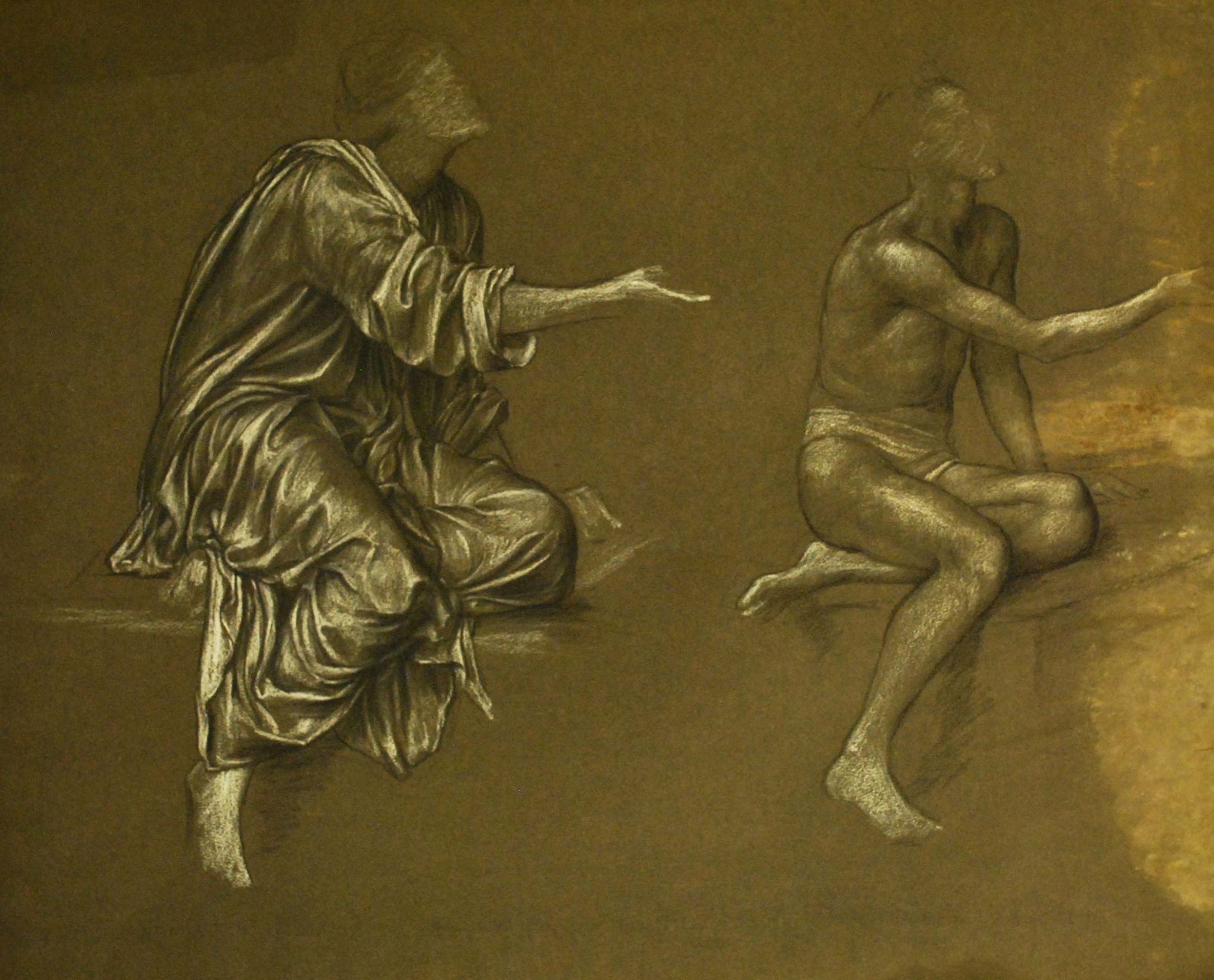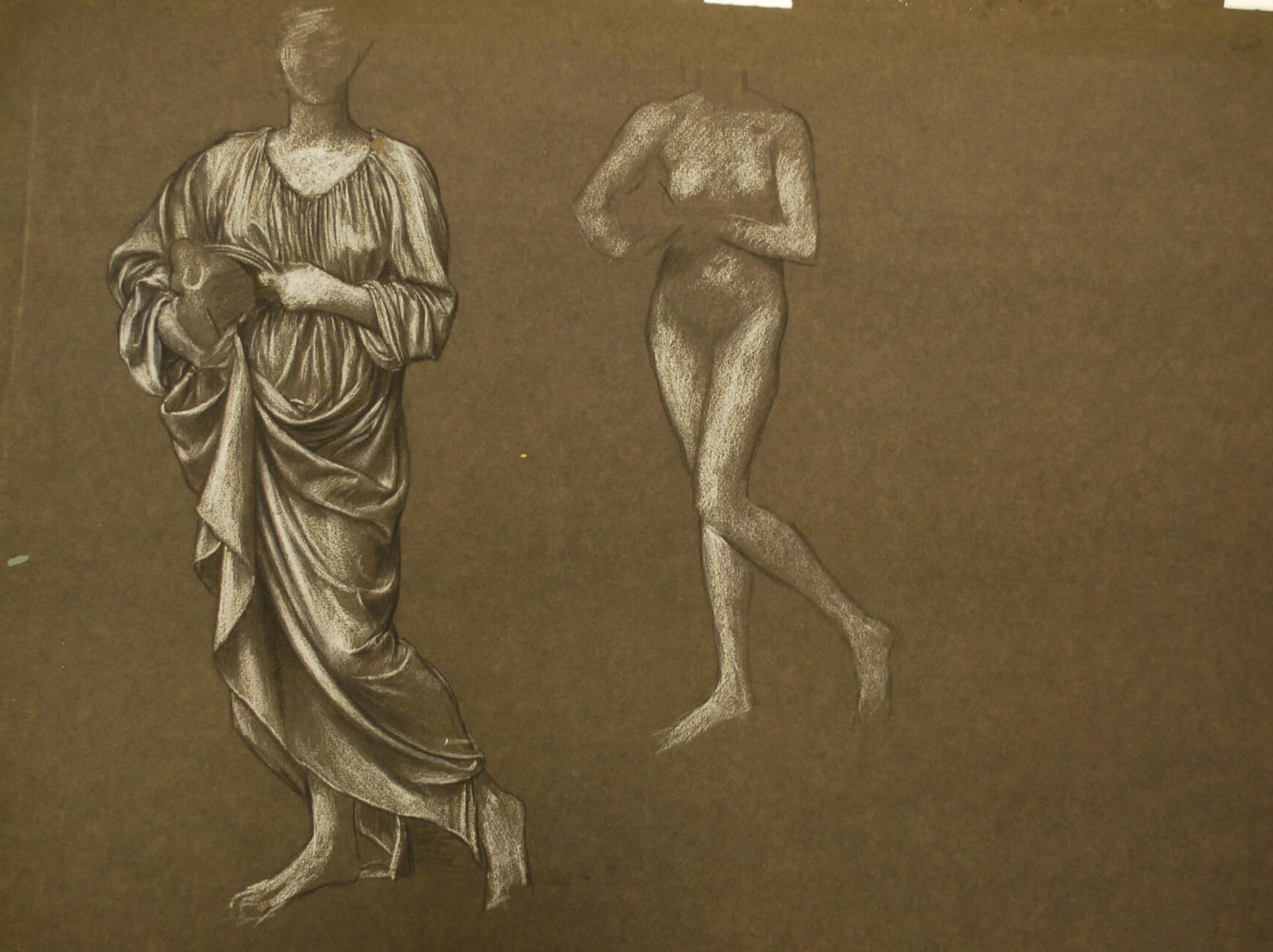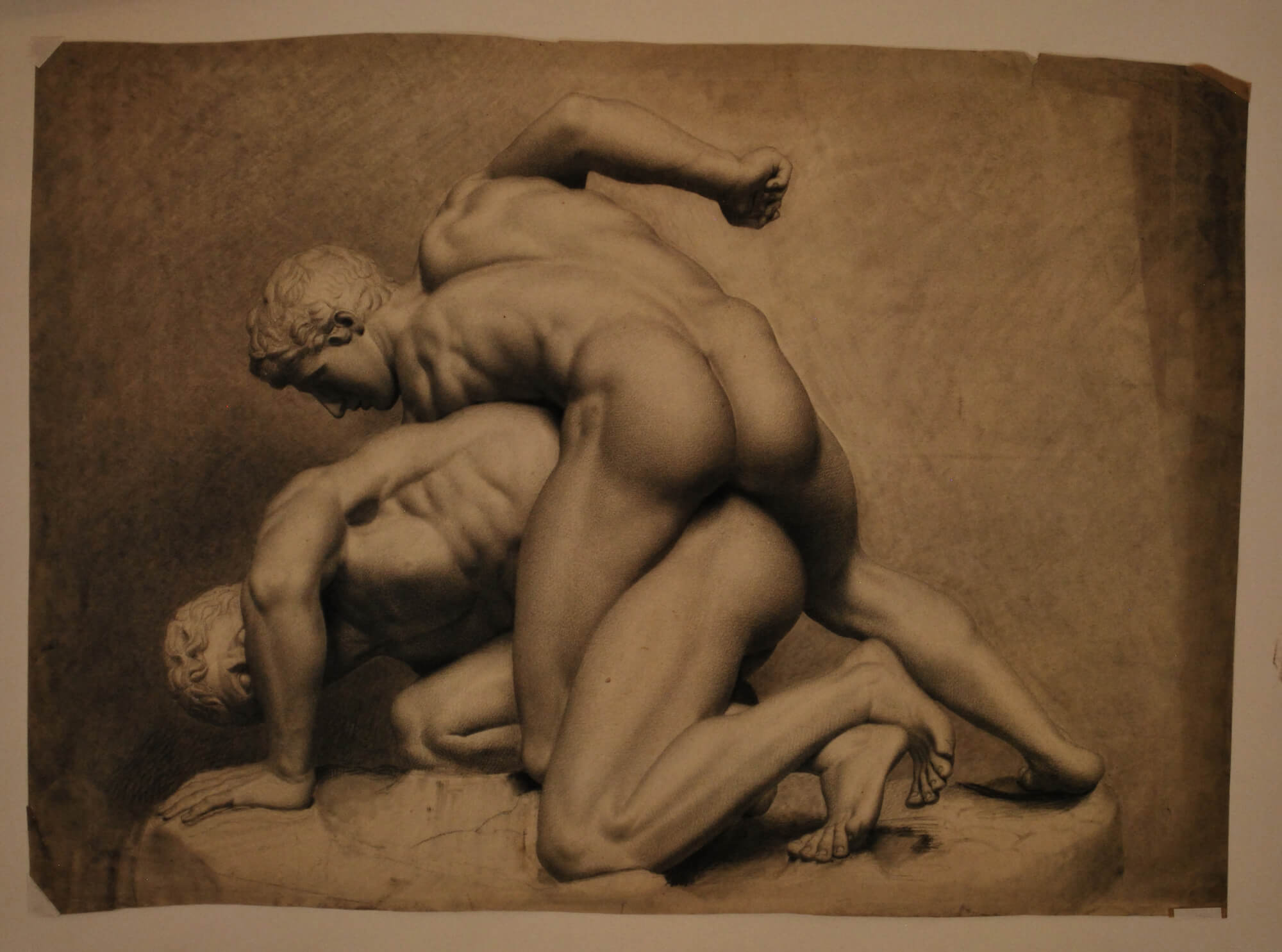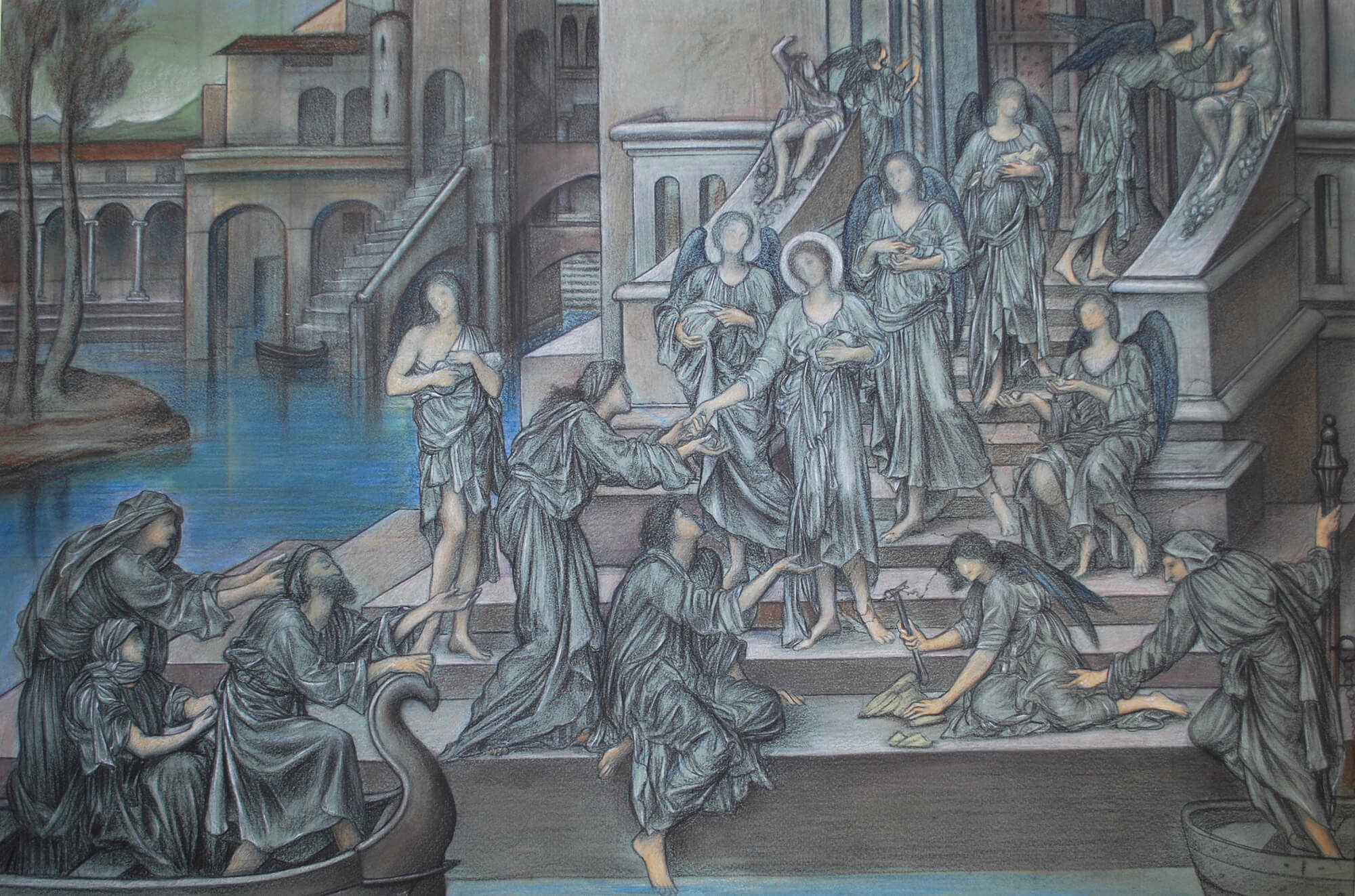Highlights in the De Morgan Museum
Islamic Arches tile panel
Earthenware tile panel consisting of 28 tiles in a wooden frame. Decorated with a polychrome design of Islamic arches in keeping with De Morgan's comm
Bird and honeysuckle tile panel.
Earthenware tile panel decorated with a polychrome design of swallows surrounding a honeysuckle tree growing from a vase. Consisting of three 8" tiles
Lustre bird dish
Lustre dish with a bird with raised wings, and a border of fish in blue and gold lustre. Reverse with cream ground and blue and gold concentric rings.
Bust of a Faun (The God Pan)
Larger than life sized bust of a faun. In several of Mrs Stirling's hand written catalogues she claims that this bust was modelled by Evelyn, decorate
Dish with mounted knight and leopard
Earthenware polychrome dish. with a mounted knight attempting to spear a leopard which has just broken the end of the spear and is carrying it away in
Heron Bottle
Ruby Lustre earthenware inverted pear shaped bottle with a long neck. Decorated in red lustre with darker red leaves against which are three crested h
Double Study of female figures associated with ‘St. Christina giving her Father’s jewels to the poor’
White and black pastel on brown paper. Water damage on rear left hand corner. Both females in same position. Female on right hand side nude and without a head. Female on left hand side clothed and clothing is gathered about the object.
-
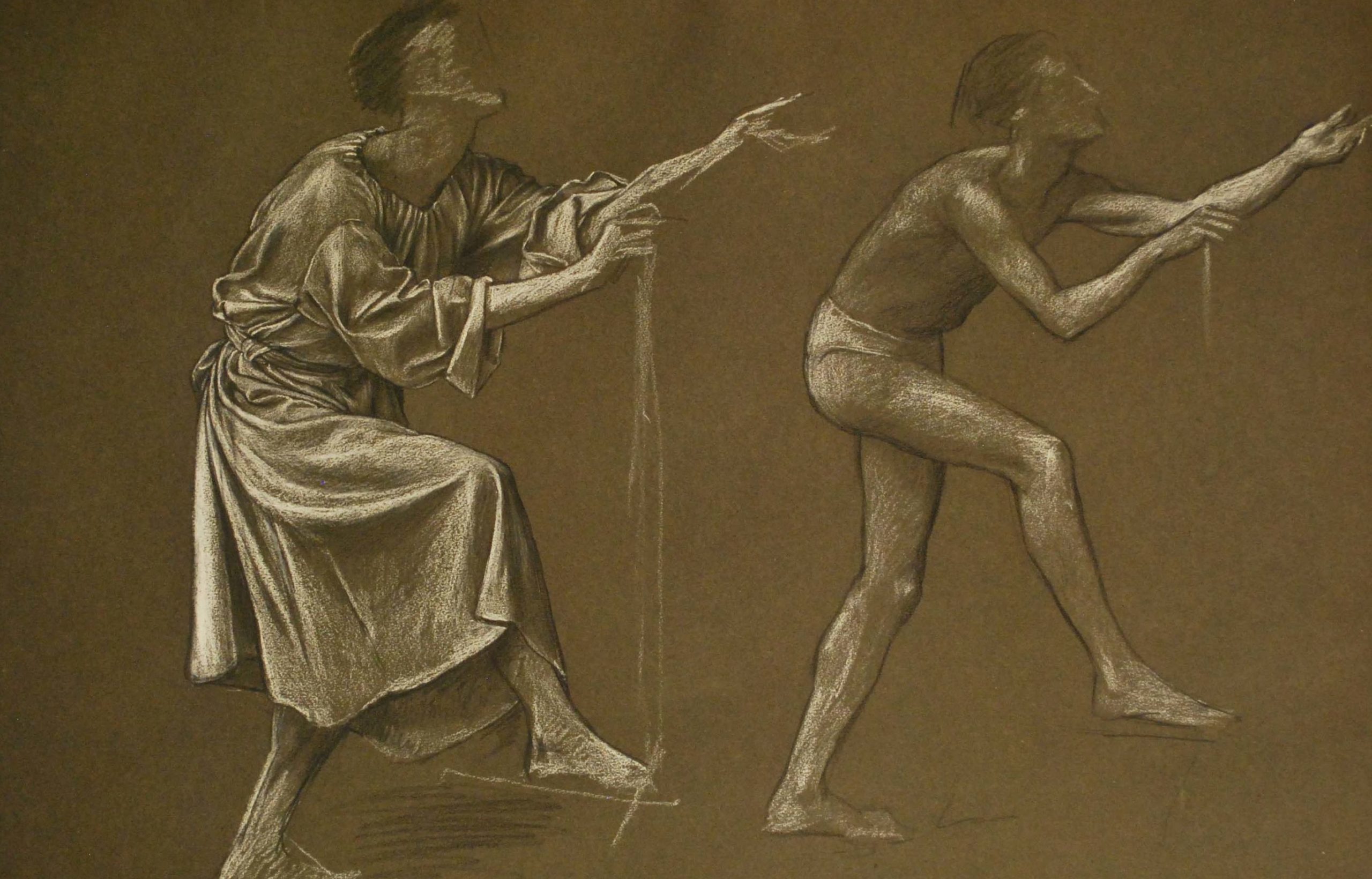 Double study of reaching male figure with raised leg, associated with Evelyn De Morgans painting St Christina giving her Fathers Jewels to the Poor
Double study of reaching male figure with raised leg, associated with Evelyn De Morgans painting St Christina giving her Fathers Jewels to the PoorDouble study of reaching male figure with raised leg, associated with Evelyn De Morgans painting St Christina giving her Fathers Jewels to the Poor
The Wrestlers, drawing from the antique, male nudes
Tonal study in charcoal and graphite on cream wove paper. The Slade was one of the first Schools of Art to allow women artists to study anatomy and life drawing. This detailed drawing from a cast of the original marble from the 3rd Century BC in the Uffizi Gallery, shows the influence of the Greek ideal of beauty on Evelyns classical training.
Compositional study for ‘St Christina Giving her Father’s Jewels to the Poor’
The building on far left is based on the Foundling Hospital in Florence.


